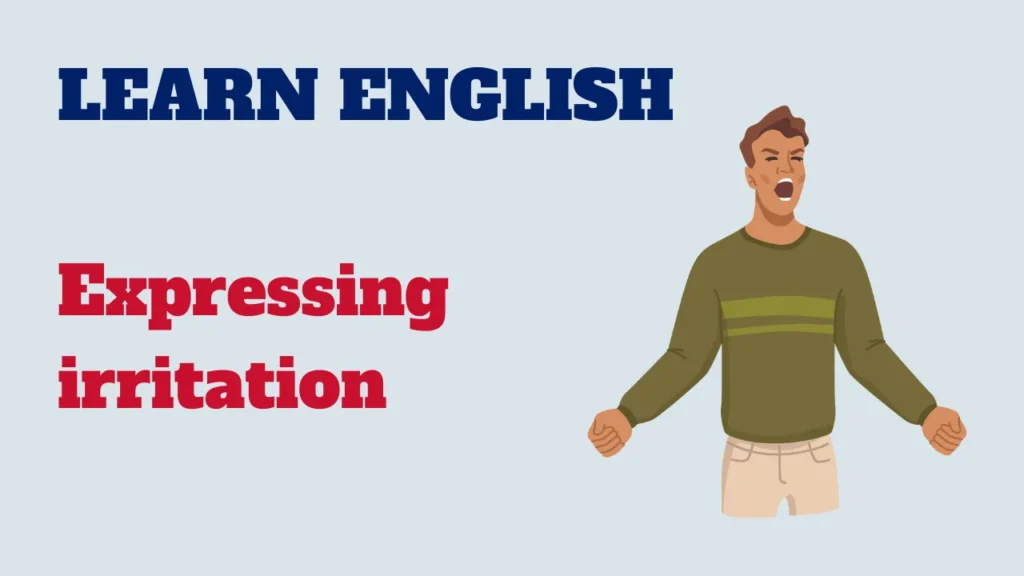Knowing how to express irritation is important for communicating your emotions and reactions to something annoying.

In this lesson, we’ll explore various ways to express irritation in English, using appropriate words and expressions to communicate your feelings.
Expressing irritation:
I am irritated – Indicating personal irritation
“I am irritated” is a simple expression to convey that you feel irritated.
Example:
I am irritated by his behavior.
It annoys me – Expressing annoyance
“It annoys me” is used to show that something annoys or bothers you.
Example:
His attitude annoys me.
I am exasperated – Signaling exasperation
“I am exasperated” means that you are deeply exasperated by something.
Example:
I am exasperated by these constant delays.
Expressing irritation in a more specific manner:
It’s really annoying – Describing something very annoying
“It’s really annoying” is used to describe something very annoying.
Example:
It’s really annoying to have to wait so long.
I can’t stand it anymore – Indicating intolerance to irritation
“I can’t stand it anymore” is used to signify that you have reached a point where you can no longer tolerate the irritation.
Example:
I can’t stand this constant noise anymore.
It drives me crazy – Showing latent anger
“It drives me crazy” means that something is causing latent anger.
Example:
His disrespectful attitude drives me crazy.
I’ve had enough – Expressing deep irritation
“I’ve had enough” is used to show deep irritation and exhaustion with something.
Example:
I’ve had enough of these recurring problems.
Knowing how to express irritation in English is essential for authentic communication. Choose the response that best matches how you feel and the situation. Practice regularly to strengthen your communication skills in English. Happy practicing!



